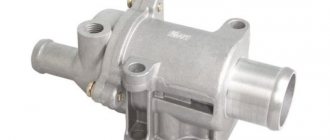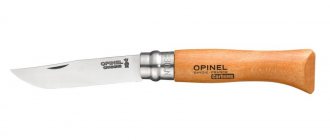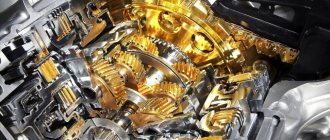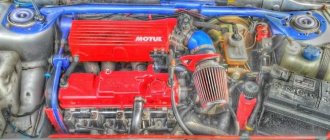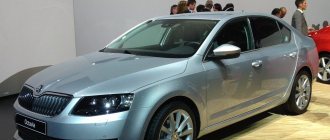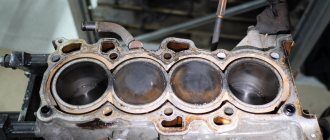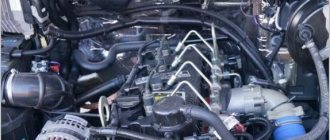We have 4 white Lada Vestas for the bride, and they are all different. Each has its own dynamic characteristics and can provide a completely different driving experience. Why is that? This is because each of them has its own power unit under the hood. Let's look at 4 engine options that are currently available for the Lada Vesta.
Let's start in order.
21179-77
I call the Lada Vesta Sport an image car, which is designed to show that AvtoVAZ can do something more than just B class cars with a standard set of characteristics. In this case, an engine with the same index as the stock 1.8 is installed, but a different ending is added. As a result, the designation 21179-77 was obtained.
The dimensions of the block and cylinder-piston group remained unchanged. Engine power 145 hp. With. and 182 N*m of torque. The compression ratio has been increased from 10.5 to 10.7 units. As in the case of the stock 1.8, the same Renault JR5 gearbox is installed here without modifications or changes.
In terms of modifications, the Vesta Sport engine differs from the stock 1.8:
- Another entrance . The inlet pipe is located in the radiator grille and is directed outward. Cooler air from outside the car enters the cylinders, rather than hot air from the engine compartment. Cold air is more saturated with oxygen, so the combustion of the air-fuel mixture occurs more efficiently. This intake can also be installed on a Vesta with a stock engine. According to owner reviews, this modification has a positive effect.
- The cylinder head features new camshafts with a modified cam profile. Therefore, the duration of the intake-exhaust phases is increased. The valve timing system has also been retuned.
- The fuel system has other injectors with increased productivity - 150 g per minute.
- Vesta Sport has a different exhaust system with an increased pipe diameter and a bifurcated main muffler.
Taking this into account, new firmware was uploaded to the engine control controller. Thanks to the modifications, the power increase was 23 hp. With. and 12 N*m of torque.
Vesta motor models
Initially, it was planned to install 4 different engines of exclusively domestic production on Vesta. Ultimately, a decision was made on three VAZ engines and one foreign-made one from the Renault-Nissan concern with the index HR16DE-H4M. This 1.6 liter engine produces 109 hp. With. As for domestic developments, the first under the hood were the VAZ 11186 and VAZ 21127 with modified intake and exhaust geometry. Later, these engines changed their indices to VAZ 11189 and 21129. All of them have 106 hp. With. with a volume of 1.6 liters. More powerful engine with a displacement of 1.8 liters and 122 liters. With. migrated from the Lada X-Ray and began to be installed on Vesta much later.
Features of the VAZ 11189 engine
This motor is distinguished by the fact that it has become the weakest in the entire line. This circumstance is indicated by the comparative characteristics of possible power plants on the Lada Vesta. In all respects, 11189 is inferior to other units. VAZ 11189 is a slightly modernized VAZ 11186. Only the intake and exhaust valves have undergone changes, all other elements are identical.
Previously, 11189 was installed on Priora and Granta in basic configurations and proved to be excellent when working with a 5-speed manual transmission. In the case of Vesta, one should take into account the higher weight and size of the car, which means that this engine will be heavier than under the hood of the same Grant. Accordingly, the technical characteristics will be lower.
There is information that engineers are planning to soon stop installing such a weak engine under the hood of Vesta. The point is not that with a volume of 1.6 liters the power is 87 hp. With. is insufficient, but that such indicators negatively affect the authority of the model.
Features of the VAZ 21129 engine
The average power unit in all respects works equally well with both mechanical and robotic transmissions. This internal combustion engine is a modernized version of the VAZ 21127, which was not bad, but did not meet international Euro-5 standards. The transition to modern standards has benefited the domestic automobile industry. Thanks to these conditions, the new engine received the following changes:
- compared to 21127, the compression ratio in the combustion chamber is reduced, as a result, car owners can refuel with fuel with a lower octane number;
- the exhaust system and resonant intake have been thoroughly modernized;
- the electronic engine control unit received more advanced firmware;
- The engine suspension has been seriously modified.
In addition, the appearance of the engine has become more modern and attractive. The unit is complemented by pressure and air temperature sensors at the outlet and inlet. The VAZ 21129 is not installed on the basic configurations of Vesta; it is equipped with the “Comfort” modifications. A similar engine is installed in the sports version of the sedan, but this is not a standard one, but a tuned version with a capacity of 150 hp. With. These indicators were achieved due to the following changes:
- the thickness of the oil scraper and compression piston rings has been reduced, resulting in lower power loss due to friction;
- the exhaust system and intake resonator have been radically redesigned;
- the piston group is lightweight, aluminum pistons are used (the likelihood of damage to the pistons and valves when the timing belt breaks is sharply reduced).
The engine specifications are as follows:
- power – 106 l. With.;
- working volume – 1.6 l;
- maximum torque (crankshaft rotation) – 148 Nm;
- according to technical regulations, oil changes are carried out every 15 thousand km;
- compression in cylinders – 12.5;
- The average engine life of a Lada Vesta is 200 thousand km.
The engine operates without interruption at any speed thanks to a special damper system that regulates the throughput of the intake manifold.
Oil consumption is approximately 3 ml per 1 liter of fuel. After making calculations, you can calculate that for 1 thousand kilometers you will need to fill in about 200 ml of engine oil. This is not much, especially since the Renault-Nissan power plant requires at least half a liter.
VAZ 21179 engine and its features
This gasoline engine has not previously been installed on any model from the VAZ plant. The 21179 power unit with a displacement of 1.8 liters first appears on the Lada X-Ray, after which Vesta began to be equipped with it. If you only plan to install it in the top trim levels on the sedan, then on the pseudo-off-road Lada Vesta Cross the engine is installed immediately. It is planned to equip the Sport version with it after it goes into mass production.
The motor is paired with a robotic transmission with 5 gears. The assembly is carried out in a selective manner; special stages of gas distribution are observed in the dynamic characteristics. VAZ 21179 has become the most powerful in the entire family, this can be judged by evaluating the main technical characteristics:
- working volume – 1.8 l, maximum power – 122 l. With.;
- maximum torque – 170 Nm;
- complies with international standards "Euro-5";
- fuel octane number – 95;
- The engine life is at least 300,000 km, without serious malfunctions.
The engine turned out to be more durable, but high power and increased volume will accordingly require greater fuel and oil consumption. Compared with previous models, car owners value high dynamics, speed and the ability to accelerate in a short period of time. Increased fuel consumption is not a factor in denying improved performance.
Engine features from Renault-Nissan HR16DE-H4M
A foreign-made motor with the index HR16DE-H4M objectively has a higher cost. This power unit is installed on most cars under the Nissan brand. Equipping such an internal combustion engine is guaranteed to increase the vehicle’s reliability and increase its service life. Foreign designers provided for the possibility of refining and modernizing the engine, and it became possible to switch to gas fuel. As a result, car owners have a choice between gasoline and methane. The main technical characteristics are as follows:
- power – 114 l. With.;
- working volume – 1.6 l;
- maximum torque – 153 Nm;
- average fuel consumption per 100 km – 8 liters (in the urban cycle) and 5.5 liters (on the highway);
- the average service life without failures or breakdowns is 250 thousand kilometers.
Despite the power of 114 horses, the Nissan engine consumes a small amount of gasoline. The same effect is observed with oil consumption; the car “eats” lubricant more economically and more practically thanks to the modernized oil-conducting channels.
One of the main advantages of the motor is the use of a chain drive for the gas distribution mechanism. The belt is not used, which means that money is saved on the purchase and replacement of consumables, the chain almost never breaks (it will not bend the valves). The only drawback is that it stretches over time and requires replacement.
This power plant will be installed on the Lada Vesta coupe. According to the engineers, the opportunity to stand out in the crowd, combined with the prestige and reliability of the car, will attract many potential buyers. Considering the dynamic and technical characteristics, it is not surprising that, compared to domestic ones, a foreign-made engine will cost more.
H4M
Let's move on to the final version of the engine, which is currently available for the Lada Vesta. This is a joint development of the Renault Nissan Alliance. For Nissan, this engine has the index HR16DE. Renault, as in this case, has the H4M.
Engine with a displacement of 1.6 liters, 16-valve and 113 hp. With. and 152 N*m of torque. The engine is assembled on an assembly line at a plant in Tolyatti. It is paired with a continuously variable automatic transmission with a Jatko JF015E variator. This variator, unlike the engine, is supplied to Togliatti assembled from Japan.
Analysis of the characteristics of the VAZ 21129
This engine is installed on the Lada Vesta and works with both a manual transmission and a robot. Has the following technical characteristics:
| Power | 106 hp |
| Volume (l) | 1.6 |
| Drive and timing type | Toothed belt, DOHC |
| Torque (Nm) | 148/4200 |
| Weight | 109.2 kg |
| Ignition | Electronic system controlled by microprocessor |
| Fuel type | Unleaded gasoline, 95 |
| Nutrition | Distributed injection |
| Speed up to 100 kilometers per hour | Happens in 12.8 s |
| Fuel consumption city (l) | 10,2 |
| Combined fuel consumption (l) | 7,5 |
| Fuel consumption highway (l) | 6,2 |
| Toxicity | Euro 5 |
| Resource | 200,000 kilometers |
Motor Features
The engine for Lada Vesta - VAZ 21129 is designed on the basis of its predecessor - VAZ 21127. It has a new modernized air supply system and good dynamics. This engine contains air temperature sensors, as well as absolute pressure sensors.
Such innovations make it possible to monitor the composition and quality of the working mixture with high accuracy, and also prevent the occurrence of floating speed in idle mode. This engine uses a special flap system that regulates the size of the intake manifold. Thanks to this system, the engine in the Lada Vesta operates optimally at any speed.
Features and innovations of this engine for Lada Vesta:
Installation of alternative engines on Vesta
Equipping the Lada Vesta with other engines is not yet widespread. This car has not yet become a cult car, like, for example, the Lada Priora. There is no detailed information about how and what power plants can be installed instead of the standard ones. This topic remains at the theoretical level for now. Basically, as the most affordable method, it is proposed to install a turbine; moreover, this is the most budgetary tuning option that can increase power and dynamic characteristics without the need to completely replace the engine. The design features of Vesta are similar to Lada Priora, so theoretically it is possible to install different engines, for example, from Mazda, Honda, or Ford Focus. If everything is more or less clear with the choice, many nuances should be taken into account when making such substitutions:
- Installing an alternative motor will require much more financial investment than the same procedure with installing a standard unit.
- If you have the opportunity to buy a higher-class car, it is better to buy it than to spend even more on installing an engine under the hood of a budget car.
- Replacing the motor will require replacing the brake system and other elements.
- The project requires not only financial investments, but also a lot of free time.
- Without the appropriate knowledge, skills and experience, the project is doomed to failure.
- One cannot cope with such work alone.
Engines on Lada Vesta satisfy any requirements of motorists. In fact, for the first time, a Lada car receives a whole line of power units from the weakest to the most powerful; a foreign-made unit has appeared. Engineers also announce the possibility of installing a diesel engine, but when this will happen is unknown. The diesel engine is more economical, which means it will be very popular in Russia. This will be the first diesel engine in the history of AvtoVAZ.



